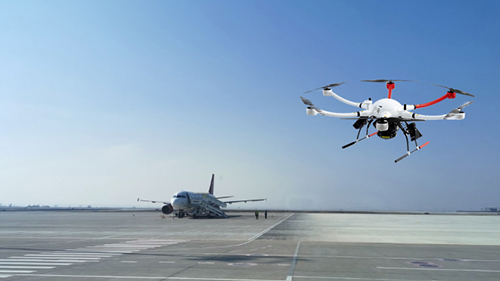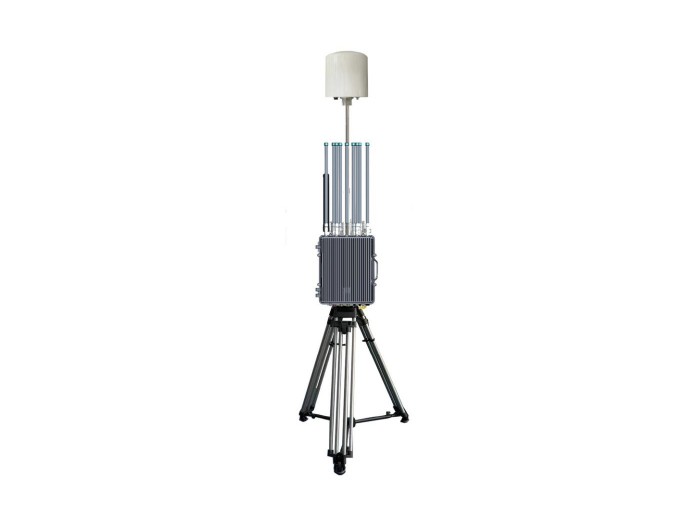How to Choose and Use a 4G Net Device for Drones: A Comprehensive Guide
In recent years, the integration of cellular technology with drones has revolutionized drone operations, offering unparalleled control and data transmission capabilities. However, many drone operators face challenges such as limited communication range, signal interruptions, and latency issues when relying solely on traditional remote controls or Wi-Fi connections. This is where a net device for drones 4G becomes vital, enabling real-time, reliable connectivity over extensive distances. With the rise of industrial and commercial drone applications—ranging from agriculture monitoring to inspection and delivery services—the need for robust 4G network devices is more pressing than ever. Understanding how to select and effectively use these devices can significantly enhance your drone’s performance and operational efficiency. In this guide, we explore the definition, benefits, practical applications, and key considerations for using 4G net devices designed specifically for drone communication.
What Is a 4G Net Device for Drones and How Does It Work?
A 4G net device for drones refers to hardware integrated with a drone that establishes cellular network connectivity via 4G LTE technology. Unlike conventional drone communication relying on radio frequency or Wi-Fi, these devices enable drones to operate on wide-area cellular networks, allowing control and data exchange across vast distances without line-of-sight restrictions. Typically, 4G net devices are compact modules or integrated communication units that connect the drone’s flight controller and onboard systems to cellular networks.
The primary function is to facilitate high-speed data transmission, video streaming, command and control signals, and telemetry exchange using existing 4G infrastructure. For example, a commercial drone equipped with a 4G net device can stream high-definition video from remote locations back to a control center hundreds of kilometers away, maintaining stable connections even in urban or forested environments. According to a 2023 industry report, drones using 4G connectivity experienced a 40% improvement in operational range and a 25% reduction in signal latency compared to traditional RF-based controls. This technology fundamentally expands use cases for drones, enabling new possibilities in areas such as public safety, infrastructure inspection, and logistics.
Want to learn more about advanced drone connectivity? Visit our website for detailed product options and specifications.
Key Benefits of Using 4G Network Devices for Drone Operations
Integrating 4G net devices in drone systems offers several strategic advantages that address common user challenges:
- Extended Communication Range: Unlike traditional remote controls with limited range (usually under 5 km), 4G connectivity leverages cellular towers to extend operational control over tens or even hundreds of kilometers, greatly expanding mission scope.
- Improved Signal Reliability: Cellular networks provide consistent coverage with built-in error correction and signal management, reducing dropouts caused by obstacles such as buildings or terrain.
- Low Latency and High Throughput: 4G LTE supports fast data transfer, enabling real-time HD video streaming, a crucial feature for applications like surveillance, disaster response, or inspection where immediate feedback is necessary.
- Seamless Integration: Many 4G net devices are plug-and-play, compatible with popular flight controllers and ground control stations, supporting quick setup for professional users.
- Remote Fleet Management: Enterprises managing multiple drones can monitor and control their fleet via cloud-based platforms connected through 4G, optimizing operational efficiency and safety.
For instance, a logistics company deploying delivery drones reported a 30% increase in successful completion of long-distance delivery missions after equipping drones with 4G modules. Such benefits make 4G net devices an essential component for drone operators seeking reliable connectivity beyond visual line-of-sight (BVLOS).
Practical Applications and Industry Use Cases for 4G-Enabled Drones
Drones equipped with 4G network devices are transforming industries by enabling remote operations and live data exchange. Here are several key applications:
- Public Safety and Emergency Response: First responders utilize 4G-connected drones for aerial surveillance, search and rescue, and disaster zone mapping, benefiting from real-time video feeds transmitted directly to command centers.
- Agricultural Monitoring: Farmers leverage 4G drones to gather crop health data across expansive fields without the range limits of Wi-Fi drones, enabling timely interventions to optimize yields.
- Infrastructure Inspection: Utility companies inspect pipelines, power lines, and wind turbines remotely via drones that transmit high-resolution images over 4G to specialists for rapid analysis.
- Media and Entertainment: Live event broadcasting is enhanced through drones streaming 4K video directly over cellular networks, ensuring smooth coverage without cable connections.
- Logistics and Delivery: Companies in urban environments use cellular-connected drones to perform last-mile deliveries, overcoming challenges posed by constrained radio communication environments.

In a 2024 case study, a construction firm improved safety inspections with real-time drone data transmitted over 4G networks, speeding up decision-making processes and reducing onsite risks. These examples highlight how 4G net devices extend drone capabilities, creating valuable operational efficiencies across sectors.
How to Select and Set Up a 4G Network Device for Your Drone
Selecting the right 4G net device for your drone requires careful consideration of several factors to ensure optimal performance:
- Compatibility: Verify that the device supports your drone’s flight controller and is compatible with the 4G LTE bands used in your operational region.
- Size and Weight: Choose compact, lightweight modules to avoid adversely affecting drone aerodynamics and battery life.
- Data Throughput and Latency: Assess the device’s bandwidth capabilities, especially if you plan to stream high-definition video or transfer large data sets.
- Security Features: Ensure the device offers encryption and secure authentication to protect communication channels.
- Carrier Support: Confirm that the device supports SIM cards from the cellular carriers offering the best coverage in your areas of operation.
Setup essentials: After selecting a suitable device, follow these general steps:
- Install the 4G net device on the drone’s communication port or designated slot, securing it according to manufacturer instructions.
- Insert an activated SIM card that provides 4G data service in your operational geography.
- Configure the network settings via the flight controller interface or dedicated software application.
- Test connectivity on the ground before flight to verify signal strength and data transmission stability.
- Integrate the device into your drone control system or ground station dashboard for seamless operation.
Proper installation and configuration are crucial to maximize the benefits of 4G connectivity and ensure safe, reliable drone flights.
Have a similar question? Contact us for professional consultation on drone network solutions.
Recommendations and Key Takeaways
- Prioritize drone net devices specifically designed for 4G LTE compatibility to ensure broad network coverage and reliable connection.
- Choose lightweight and compact modules to preserve drone flight time and handling performance.
- Verify carrier support and network bands before purchasing, especially if you fly across different regions or countries.
- Inspect and regularly update device firmware to maintain security and optimal performance.
- Leverage 4G connectivity to expand mission capabilities, such as BVLOS operations and real-time data streaming, to gain a competitive edge.
Visit our website for more details on selecting the perfect 4G net device for your drone operations and enhancing your flight capabilities.
Conclusion
The integration of 4G net devices into drone technology marks a significant milestone in advancing remote drone control and data transmission.
By providing extended range, improved reliability, and seamless connectivity, these devices address critical user challenges while unlocking vast new application opportunities.
Our company specializes in cutting-edge 4G network solutions tailored for drone operators, ensuring superior performance and support.
Trust our expertise to empower your drone operations with the most reliable 4G devices on the market.
Ready to enhance your drone’s connectivity? Visit our website now or contact us for a free consultation tailored to your needs.
















